-
Posts
19,842 -
Joined
-
Days Won
4
Content Type
Forums
Detector Prospector Home
Detector Database
Downloads
Posts posted by Steve Herschbach
-
-
Thank you everyone. The ATX is a fine detector and has some really great design aspects. I'm looking forward to using mine a lot in the future. Hopefully a lighter weight version will be forthcoming someday. Things happen slowly in the metal detecting world though so I will not hold my breath.
-
Hi hawkeye,
There is no doubt the ATX delivers the bang for the buck and will reward those willing to work with it. The ATX did find its first California nugget when I hunted around after doing the comparison testing. Nothing to brag about but a gold nugget is a gold nugget!
I dug a pocketful of bullets so was surprised to only find one nugget actually. That's the way it goes though.
Good luck with the ATX and give a yell if you have questions. Very simple machine though, just needs patient work and careful coil control.
-
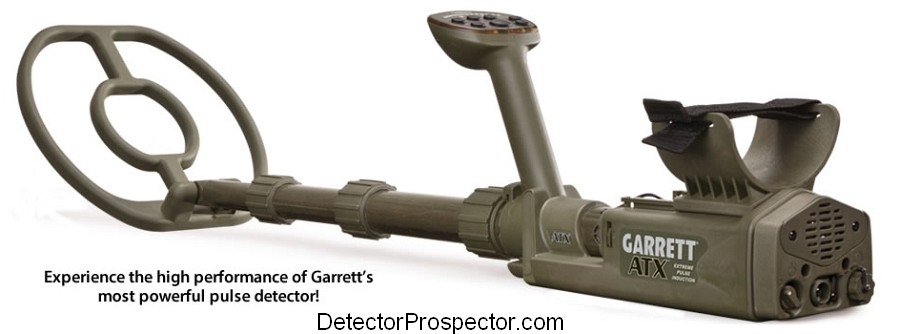
I have used the Minelab GPX 5000 since it was introduced, and in fact probably owned the first one in Alaska. I have used the Garrett ATX also since it came out with one of the first units off the production line. I have been putting this review off while I got to know the ATX. I now have over 100 hours on the detector in a variety of environments so the time has come.
This metal detector comparison review was very challenging for me to write. It pits two very different yet very similar detectors against each other. In a way it is almost like discussing three detectors instead of two, and there is the issue of a huge price difference. I apologize for the length but this is a case where I wanted to be as thorough as possible on the subject. This is the review you will never see published in a magazine!
In a way it is all about that price differential. If the two detectors were priced similarly there would be much less debate than is going to occur amongst people and a far easier buying decision for some to make. For me personally it really is a story of the Garrett ATX being two very different detectors at once and so I will start the review there.
I have been metal detecting over forty years now, and metal detecting is very important in my life. Not a day goes by that I do not think about, write about, or actually go out metal detecting. Luckily for me a large chunk of my income is derived from metal detecting and so I can justify a collection of metal detectors for what I do. I engage in quite a few detecting activities and I strive to have the very best detector possible at my disposal for whatever it is I am doing. Because of this I am constantly on the look for new detectors that might help me in some way.
However, now that the technology is maturing I have the bases pretty well covered. The only thing I was still looking for was a detector that satisfied me while water detecting in Hawaii. Every other detecting scenario I have covered to my satisfaction, but every time I hit the water in Hawaii I was left wanting something better than was available. The combination of salt water, volcanic rock, and military grade electrical interference is very challenging for any detector.
What I generally want is a combination of stability and power with good ergonomics. The perfect detector should only signal on desired targets and nothing else, at good depth, while feeling good on my arm. I obviously reject detectors that get poor depth - these are usually the lower price detectors. Most top tier models are very competitive in the depth department. Other detectors I have put aside solely due to an inability to handle electrical interference. Fine machines otherwise, but unstable in an urban environment. Other detectors are too noisy in mineralized ground or too chatty in dense trash. And finally, some detectors are holdovers from the old days of heavy and clunky. I do not like detectors that make my arm hurt!
I was therefore very excited when I heard the Garrett ATX was on the way. I was very familiar with its predecessor, the Garrett Infinium, which was tantalizingly close to my perfect Hawaii detector. Unfortunately the Infinium suffered in the stability department. I was also aware of the Garrett Recon Pro AML-1000 military demining detector. I was intrigued by its having a non-motion monotone search mode and wondered if that could be incorporated into a new improved "Infinium Pro" model. I not only had Hawaii in mind but started envisioning scenarios involving underwater sniping for gold employing a metal detector.
Add to this that neither Minelab nor White's seemed interested in putting a waterproof ground balancing pulse induction metal detector in my hands. I never expected it would be Garrett that would come out with a second generation model based on the Infinium before anyone else got to first base.
I have told you all this to explain what I was expecting and hoping for in the Garrett ATX. The fact is Garrett delivered with flying colors on my desires and the ATX is now one if the most important detectors in my collection. I have already paid for the detector with jewelry found and it is the Hawaii detector I always hoped for. Garrett ATX in Hawaii If we are talking about the Garrett ATX as a new waterproof detector for use on black sand or volcanic island beaches the review can end right here. The Garrett ATX is a superb detector for those conditions and well worth the money.
There is only one fly in the ointment. If you look at the full page ads for the Garrett ATX it is clearly being marketed as a prospecting detector, and one pretty clearly aimed at Minelab's top end models. Specifically "The ATX performs head-to-head with the most expensive prospecting detectors in the world."
ads by Amazon...
Interestingly enough this idea was not even on my radar. I had always thought it was a huge mistake for the Infinium to be set up as direct competition for the high end Minelabs. Anyone involved in that remembers the hype and resulting disappointment and backlash. The Infinium eventually found its place but more as a water and relic hunting machine than a prospecting detector, although it is a capable enough unit. My hope was to avoid a similar scenario with the ATX. I do not like hype and prefer things to be under sold so people are pleasantly surprised when their expectations are exceeded. Hype leads to disappointment when inflated claims cannot be met.
The reality here however is that Garrett has chosen to make prospecting the battlefield of choice. There is a lot of money at stake here for a lot of people, and so I am going to do my best here to compare the two units as dry land prospecting detectors. I think we can all agree that if you are looking at both the Garrett ATX and Minelab GPX 5000 and need the detector to be waterproof the Garrett ATX wins hands down.
The funny thing here is that if Garrett was gunning for Minelab then in my opinion they went about it the wrong way. I get the distinct impression the design process was backwards. It was not a matter of "what do prospectors want in a metal detector?" I think it was "we have this housing on the shelf we developed at great expense to go after a military contract. We need to leverage our development cost by putting something in that housing we can sell to the public." In other words, I do not see any sign of design following function. All I see is a prospecting detector crammed in a box inappropriate for the desired end use. If Steve Jobs was into metal detectors he would be rolling in his grave. I will have to suffice instead by simply shaking my head at missed opportunity. I will explain more about that later.
Let's set ergonomics aside though for now and just talk about straight up prospecting performance. How does the Garrett ATX fare against the Minelab GPX 5000 on gold in mineralized ground? I have done fairly extensive tests but I do have to throw in the caveat that the world is a big place and when you discuss prospecting detectors one truth is paramount. It is all about the ground mineralization and hot rocks. What works well in one place fails in another, and for this reason alone I cannot offer 100% assurances. I have spent a month traveling Western Australia detecting every day and so I am quite familiar with what prospectors face there. I am not about to begin to offer more than an opinion about how these two detectors fare in the worst Australian ground but I do think my conclusions will prove to be true. I can tell anyone right now knowing detectors the way I do that either machine will prove superior at certain locations given their differing capabilities.
In a nutshell, the Garrett ATX has a ridiculously good circuit. The engineers at Garrett have done a superb job of producing a detector that out of box performs extremely well on a wide variety of gold in a wide variety of ground conditions. I tested both units in some very red mineralized soil, both outfitted with stock DD coils. The ATX comes with a 12" x 10" DD coil. The GPX 5000 comes with two coils, one of which is an 11" round DD coil and this is what I used. The nuggets ranged from 0.1 gram to 6.5 ounces.
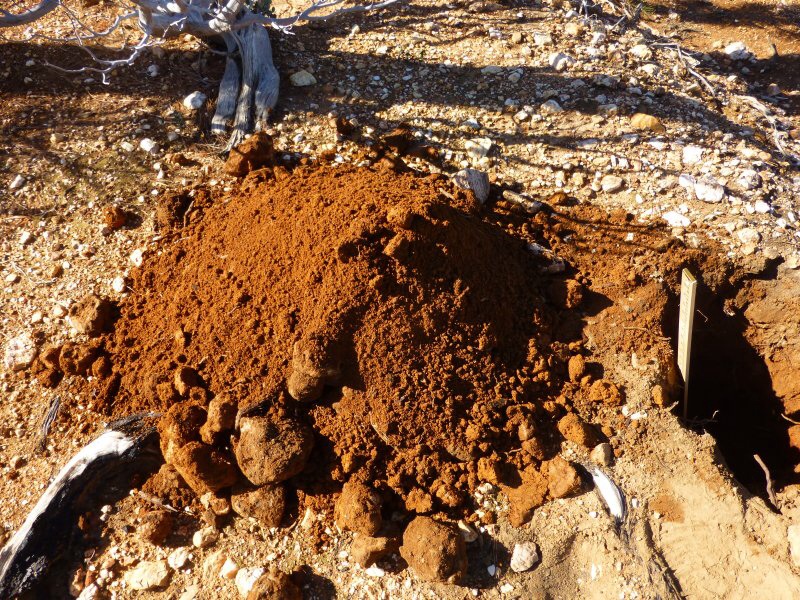
Test conditions
The impression I was left with was definitely not how the GPX 5000 blows the ATX away but instead by how well the Garrett ATX does. It is impossible to not be impressed by how well the $2120 detector does when run head-to-head against a $5795 detector. Garrett has done a fantastic job and in my opinion their advertising claims are not off base. This is a serious prospecting circuit well worth consideration.
The two detectors basically differ in the range of gold they find best. The Garrett ATX skews towards the smaller more commonly found gold nuggets. The Minelab GPX 5000 skews towards larger gold nuggets that tend to be the goal of professional prospectors. Out of box with similar coils the ATX will find small gold nuggets the GPX 5000 would normally miss without special coils and tuning tricks. It does this simply and with no fuss. However, in mineralized ground with similar coils the GPX easily bests the ATX on large nuggets. By large I mean one ounce and larger and by easily I mean by a margin of 10-15%. The GPX 5000 does this using a coil that in my case had never been on the detector before. Most Minelab users would never consider hobbling the detector by putting the 11" round DD coil on if hunting large nuggets at depth. It is informative therefore that even doing this in the interest of "fairness" and with nothing more than stock Normal timing with Gain bumped to 16 (out of 20) the Minelab GPX 5000 easily outperformed the Garrett ATX on a 6.5 ounce nugget. The ATX was at max Gain of 13 for the test.
Now the depth differential here was only about two inches but I have to throw in the huge caution note again that it will vary depending on ground conditions. Absolute depth was about 17" ATX versus 19" GPX for good solid signals. The kind nobody can miss. Again, do not take these as some sort of magical numbers as ground conditions and even nugget shape and alloy could cause you to get some surprising differences. That is why I hate mentioning exact depths and differences in most cases and just stick to relative conclusions. But you are going to ask so there you go. For reference a Fisher Gold Bug Pro with 13" round DD coil and White's GMT with 14" elliptical DD both with settings jacked to the max were barely able to obtain this solid gold 6.5 ounce nugget at 12" in this ground and the GMT in particular would not really have been able to hunt maxed out the way it was.
Depending on who is reading this the response may be "really, only two inches?" or "wow, two whole inches!" Similarly, it is interesting to see the GPX with DD coil scrub a little nugget with no signal that the ATX easily detects at a couple inches.
This however does end up being my basic and not new finding by any means. Others have reported similar results. The ATX does better on small gold and the GPX on large straight out of box with stock DD coils.
I do believe the GPX has more ability to handle more varied and more intense ground conditions and hot rocks due to its many adjustments. However, this is more a belief than a fact as so far the ATX has easily handled everything I have thrown at it, including salt water, basalt rocks, and electrical interference in Hawaii. Garrett does make use of a salient fact in its advertising. The ATX handles a wide range of conditions with deceptively few settings. This makes it very easy to set up and it avoids a common complaint with the GPX detectors. They are so complex people are often left wondering if they have the optimum settings for the conditions. I know for a fact from observation that many people tend to use timings that are too aggressive for the actual conditions when using a GPX. The tendency often is to find something that seems to work well and then to just default to that way if doing things, even if conditions change. To get the best performance out of a GPX does require that a person be somewhat of a tuning wizard.
The bottom line for many more casual prospectors in the United States especially is that the Garrett ATX represents a fantastic value. It is truly impossible to say but in my case at least most of the gold I find in the US with my GPX an ATX would have found it also. In particular when hunting areas where bedrock is a foot or less the ground would have to be extremely hot indeed for the ATX to not only find what the GPX will but to have an edge on the more common small gold. Even in deeper ground as long as the gold is measured in grams and not ounces and the ground not extremely mineralized the ATX is going to be a close match with the GPX. Again, out of box with stock DD coils.
Where the ATX is going to clearly come up short is on large nuggets, especially those sought after 1 ounce and larger nuggets at depth and on gold in the worst mineralized ground and hot rock locations. To be perfectly honest I feel my putting an 11" inch round DD coil on my GPX 5000 in the interest of being fair does not reflect for one second how I look for gold. I am not out there being fair, I am out there looking for gold. I will be running a larger mono coil with settings optimized for larger gold and then the difference in large gold performance between the ATX and GPX is even more pronounced. I would consider a 10-15% to be a bare minimum advantage gained while in effect running the GPX with its hands tied.
I have not done comparisons on the iron discrimination systems but I find the method used by the ATX to be inherently more reassuring. The GPX reacts to shallow ferrous targets by blanking out, a sort of non response. The ATX has a momentary ferrous check that kicks in at the touch of a button, and that gives a low tone growl on iron, which provides a more nuanced and natural response expected by most detector users. I am not a big fan of using discrimination on either unit but I did find the ATX method more to my liking for confirming shallow ferrous stuff as trash that I already thought was trash due to the response. Note that on either detector the ferrous rejection only works on shallow items and only with a DD coil. The amount of rejection is adjustable on the GPX and preset on the ATX so more tests really need to be done in this regard to determine which is the more accurate and useful system.

Minelab GPX 5000 and Garrett ATX (Minelab outfitted with optional Nugget Finder coil)
I do own both detectors and there is a simple reality here. If I am going looking for gold in the water, be it jewelry or nuggets in a creek, I will grab the ATX. For any other prospecting, the vast majority of it, I will be using the GPX 5000. I am not sure where the line between casual and serious is, but I am way, way over on the serious side. I spend a great deal of time targeting and hunting deep ground looking in areas where very large nuggets have been found historically. Most of the ground I detect I am hunting because it has produced nuggets weighing a pound or more in the past. I hunt tailing piles a lot so bedrock is tens of feet down, and the gold can be at any depth from shallow to extremely deep.
I think most professionals would tell you that small gold is what happens along the way while looking for the big stuff, and at the end of the day it is the big stuff or the lack of it that makes the difference. I found over thirteen ounces of nuggets metal detecting in 2013 which is no great sum of gold in my book, but well over half of it was in the form of two nuggets, one weighing 6.5 ounces and the other 2.37 ounces. Now in this case the ATX would have found both these nuggets. Yet I would not use anything but a Minelab GPX for what I am doing. I am spending a lot of valuable time going over ground that I may only get one shot at. I plan these things well in advance and not only time but good money is invested in taking my best shot at getting good results. I basically cannot afford to be running anything that I feel does not give me the best chance of delivering that make or break it big nugget. One nugget can make all the difference between a month of lackluster results and fantastic success.
If both the Garrett ATX and Minelab GPX 5000 detectors had exactly identical electronic performance I would still be swinging the GPX. I am on one hand very impressed with the ATX as a nugget detector and on the other hand very disappointed by it. The up front decision to use the Recon AML-1000 housing is an automatic fail from a nugget detecting perspective in my opinion. It adds not only needless weight but weight that is very much an impediment in rough, uneven terrain. This is accentuated by a stock coil that is sensitive to knocks and bumps. It requires an extra level of coil control to manipulate the detector in such a way as to not produce excessive false signals. This differs from Minelab coils that basically do not false at all unless something is wrong with them. I would caution anyone using a detector the way I do that the ATX requires extra care as regards the possibility of repetitive motion injury. Trust me as somebody who detected too much one year and ignored the signs this is something to regard seriously. A harness is a must for weeks of long daily use of the ATX. I shudder to think about how the detector feels with the 20" long rear mounted mono coil hanging off the front. That is an ergonomic nightmare.
The ATX features silicone lubricated battery door o-rings that collect dirt. The coil connectors also have o-ring seals and even worse delicate pin connectors subject to damage if not carefully lined up. The headphone connector is similar to the coil connectors. All these are required to make the detector waterproof and not only unneeded for normal dry land use but an impediment as regards serviceability in the field.
The coils are sold as a unit with the telescoping rod assembly adding needless expense and weight and making carrying an extra coil around something to be avoided. The rear mount enables the ability of the detector to fold up but is another weak point from a serviceability aspect and ergonomically the worst way to mount a coil.
I always considered ergonomics to be the easy low hanging fruit for anyone considering manufacture of a detector to compete with the Minelab PI series, and I am frankly amazed anyone could make something even heavier I am less excited about handling. It is an absolute fact I would put the GPX aside for an alternative, even if that alternative was next best in overall gold ability, if it offered a big advantage ergonomically. I in fact often do decline to "harness up" and set the GPX aside in favor of a lightweight VLF at times because I am just too tired or not in the mood. More importantly, in steep terrain bedrock is often shallow and so when hunting hillsides and slopes there really is no advantage to using a GPX in ground only inches deep.
I would very gladly use a properly designed Garrett ATX instead of a Minelab GPX in many situations that I currently encounter. In particular areas where bedrock is less than a foot deep or in areas where large nuggets have historically never been seen. The only reason right now that is not going to happen is I do not want the ATX on my arm. Yes, the ATX has an inherent advantage on small gold but nothing I can't negate by putting on a small mono coil and running the GPX hot. No, in my opinion Garrett missed a major opportunity to wow somebody like me by putting a fantastic prospecting circuit in a package very inappropriate for the target audience.
Metal detectors are tools. Now the fact is that for the average person Craftsman tools do just fine and represent good value. But the guy making his living with his toolbox is probably going to be investing in Snap-on tools. It is an apt analogy accentuated by the real performance difference that exists between the Garrett ATX and Minelab GPX detectors on the kind of gold most pros are looking for. The vast number of accessory coils and other aftermarket options on top of a well proven platform makes it an easy decision for the serious prospector. Minelab makes a tool designed specifically for a certain job. The Garrett ATX unfortunately I feel is a duck out of water when employed for normal prospecting uses.
I do have to say my hat is off to Garrett for producing a detector that is the first to really give Minelab a run for the money. I hope they do follow up and produce a model expressly designed from the ground up as a dry land prospecting machine. It may well become my primary prospecting detector if they do so. If you have read this review carefully you should understand the issues involved. For many people wanting maximum bang for the buck a Garrett ATX straight up and used properly is a real bargain in a PI prospecting machine. It can and will find gold and find it very well. The guys like me (you know who you are) that probably already have a Minelab PI plus extra coils, batteries and so forth can continue waiting for the next big thing in nugget detecting. You may also consider the Garrett for exactly the reason I did. It is waterproof, and currently is the closest thing you can get to a Minelab PI in a waterproof package.
In closing I am curious to see how both detectors do for me this year. The ATX has the lead with about 2.5 ounces of gold and platinum jewelry found so far. I plan on using it often to hunt jewelry every chance I get in 2014. The GPX I will once again be taking to Alaska for a couple months of nugget detecting which may or may not pay off with a large nugget found. I will be hunting the right places but large gold is rare almost anywhere you go. Given the lead the ATX already has the GPX has its work cut out for it so it should make for an interesting year. For those of you trying to decide between these two very fine metal detectors I can only sympathize and count my blessings for not having to make such decisions. However, I hope this helps you with your decision because I have done my best to try and do just that. Good luck and good hunting!
2020 Note: Since this review was written in 2014 the price for the ATX was remained the same, while the price for the Minelab GPX 4500 and GPX 5000 have both come down considerably. This does change the value proposition offered by the Garrett ATX, especially as regards the Minelab GPX 4500, which can now be had for only a few hundred dollars more than an ATX.
Detailed information on the Garrett ATX
Detailed information on the Minelab GPX 5000
Great video by another party (a Garrett dealer) confirming the above results at another location with a different large nugget....
-
Keith's video. Thanks for chiming in here Keith, you have an incredible wealth of detecting knowledge.
-
Hi Keith,
I was a bit surprised to see your ATX for sale and I think you made the right move keeping it. Mine is a keeper for sure. I could elaborate but it can wait for tomorrow.
Added 3/15/14 Garrett ATX vs Minelab GPX 5000
-
Hmmm, on one hand nothing new to report but I respect the ATX more than ever now after yesterday. It fares very well compared to the GPX 5000 and it makes it very difficult for me when engaging in the price vs payoff discussion. When you take price out of the equation the answer is clear. I have both and if I have to grab one to go prospecting I am grabbing the GPX. But the performance is close enough that I struggle with telling more casual detectorists they need to spend twice as much to get a GPX - almost three times as much in the case of the GPX 5000.
I am mulling this over and am finally going to post my definitive ATX vs GPX review. I have been holding off until I had more time on the ATX but by now I have more hours on it than all but a handful of people. Look for a review tomorrow.
-
Actually sounds to me like you are doing it right by the number of non-ferrous targets you are digging. That is the name of the game.
Still, you we lucky in that Minelab has made a fantastic book available for free - Understanding Your X-TERRA by Randy Horton at https://www.detectorprospector.com/files/file/139-understanding-your-x-terra/ -
Hey hawkeye, do not take the following personally. I am answering the question generically for anyone who may be reading and I am specifically speaking to people in the United States (in case Aussies are lurking).
It is all about how much success you are currently having finding gold with a metal detector. If the amount of gold nuggets you have found so far with a metal detector is measured in ounces than the GPX 4800 is the better investment. The likelihood is you can pay for the difference in gold.
If you do not have a proven history as a successful prospector than you simply may be spending extra money to not find gold. I figure the vast majority of nugget detectors in the US never pay for themselves ever. They get bought but never get used seriously enough to keep up with battery costs let alone paying for the detector.
All you ever pay for in a detector is an edge in recovering targets. Usually that means that extra inch, or simply the ability to ignore rocks another detector beeps on. But the extra capability means nothing if not put to practical use in a good location.
If you constantly hunt ground where bedrock is a foot or less the ATX is going to do a good job. If the gold in the location tends to be small, like a couple grams or less, the ATX is going to do a good job.
The deeper the ground and the bigger the nuggets, the better the GPX looks by comparison.
For me personally there is another factor. Pure ergonomics. When I go to Alaska this summer aiming to go detecting every day for 30 days for as many hours as I can each day, I would rather be handling the GPX from a physical aspect. The detector on arm is lighter, and I can change batteries or coils with no fuss, no muss. I have hundreds of coil options. For this reason only if both detectors had identical performance and an identical price I would be using the GPX. And for this reason only I am willing to pay more money for a GPX.
If Garrett comes out with an ATX model that weighs around four pounds or less in a well balanced package that forgoes the special connectors on coils and headphones in lieu of standard connectors and a single drop in battery - and that has a good set of light weight coils - now I may very well put the GPX aside even if it might be the better unit for some gold in some conditions. For me the detector is a work tool and if it can measurably improve my working conditions and comfort than it may mean I hunt more and longer, and that may mean more gold. That is the detector I am waiting for, whether it be from Garrett, Minelab, or someone else
Just my thoughts and applying my mental filters as regards detectors. You do have to think hard about and apply your own wants and needs.
This may help - I am going to be testing a GPX against an ATX all day tomorrow! So I may have more to add to this discussion on Friday. In fact, you can count on it.
-
More than anything Ray I am impressed by your commitment to just keep getting out there and getting after it. That as you know is the real secret - detectors do not find gold sitting in closets. I seem to be getting caught up in one aspect of life or another that has kept me from getting out and hunting gold as much as I envisioned the last few months so I need to do something about that.
-
-
Here is a nice little interview of electronic prospector Jonathan Porter of Australia. It was my good fortune to have JP as my host for over a month in Australia looking for gold in the Australian outback. I could not have asked for a better guide and host. JP is not only a superb prospector but a true gentleman.
Check it out at http://www.abc.net.au/local/videos/2014/03/10/3960406.htm -
Unfortunately waterproof detectors are problematic for manufacturers. It is a small market and the detectors have the highest warranty costs of any segment. So once a waterproof detector gets designed it tends to stay in service forever with minimal change. It would be nice to see a new waterproof PI from Fisher though since that niche has gone empty since they discontinued the Impulse.
-
I assume it is a Gold Bug decked out as a relic detector. I do not care what they call it as long as it finally comes with the 5" x 10" DD coil as stock. I wonder if anything electronic has changed? Iron volume would make the relic crowd happy.
It is an outdoor expo in Germany with far more hunting enthusiasts than metal detector users. So very little chance anyone would see it and know enough to care to post details. It looks exactly like my Gold Bug Pro with the 5" x 10" DD coil mounted. F 19 sort of implies 19 kHz. The F series is defined on the Fisher website at http://www.fisherlab.com/hobby/deetectors-f-series.htm as MULTI-PURPOSE VISUAL & AUDIO TARGET ID DETECTORS
The Gold Bug Pro is doing well for the relic hunters but the name was not a good fit. Fisher may simply have rebranded it or the lower price Gold Bug and included the popular 5" x 10" DD as stock equipment and camo options to boot. This allows them to market it as a relic detector and part of the F series. It would resonate more with people in Europe than a detector marketed as a prospecting machine. It would also explain the lack of fanfare because if true there really is nothing new here.
If all there is to get people going is speculation then let them speculate. Reality is probably boring. I put my money on Gold Bug Pro with new decals and stock with 10" elliptical coil. That would be nice as I do think it is the best coil for the detector and right now only way to get it is as an accessory item or part of a dual coil package. So now you can finally get a Gold Bug Pro with the coil that should have been on it from day one. And a new name so sellers do not have to explain to relic hunters why they might be interested in a prospecting detector. Wave the magic marketing wand and now it is a relic detector.
Pure guess on my part - I have no insider information on this unit. But if I am right it will be funny as in my role as a gold prospector I will end up recommending people buy the relic detector instead of the gold detector. Unless they finally offer the Gold Bug Pro with 10" elliptical without forcing the purchase of a dual coil package.
-
There is a case to be made that gold has bottomed. Supply is outstripping demand and we live in a world where ever more money is being created. Paper money is still backed by gold in that you can trade your dollars for gold any time you want. Now may be a good time for that. But the other play is to invest in gold mining stocks, which have suffered greatly as of late. Buying stocks when nobody else wants them does not always work but it does enough to consider.
I am not expert in any of the above, and you can always find opinions for any side of this equation. The fact is nobody, even the so-called experts, really knows what is going to happen with gold prices. But here is a short and I think good analysis of three major gold stocks, Barrick, Newmont, and Goldcorp at Motley Fool for your consideration.
http://www.fool.com/investing/general/2014/03/06/has-gold-hit-a-bottom.aspx -
My Fisher Gold Bug 2 is more like a mining tool than a metal detector. As such it gets subjected to a lot of potential abuse. In particular, I like to sit it upside down, control box on the ground, while I wave my scoop over the bottom of the coil looking for a tiny nugget.
I have some money invested in this tool however and I want to take care of it. So I use a little known Fisher secret - the holster / control box cover for the Gold Bug 2.
As you may or may not know the Fisher Gold Bug 2 is designed to be taken off the rod assembly, and by way of built in slots put on a belt and hip mounted. This is great for making the rod assembly super light for overhead use, like working a cut bank or steep tailing piles. It also puts the control box under your rain coat for protection. Note that bending over with the box on front of your hip continually bends the coil cable where it attaches to the box and will lead to premature cable failure. I therefore recommend mounting the box on your rear hip as shown. This is over my shirt for the photo, normally my belt would be holding my pants up also!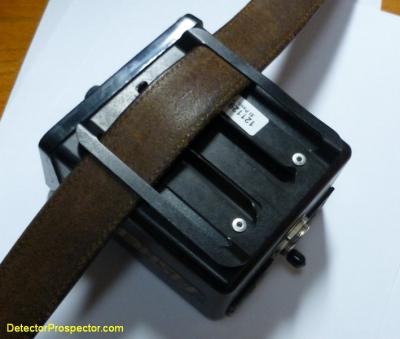
Fisher Gold Bug 2 Belt Slots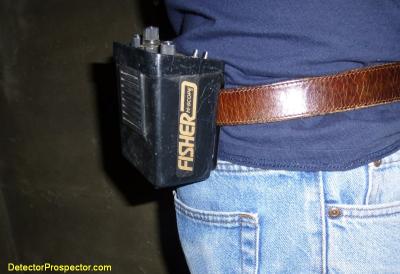
Fisher Gold Bug 2 Hip Mounted
The holster of control box cover for the Gold Bug 2 is made of heavy waterproof cordura nylon with belt loops and a flip cover with velcro closure. It has a hole on the bottom to attach the coil cable and access the threshold control. The top cover has a notch for the headphone jack.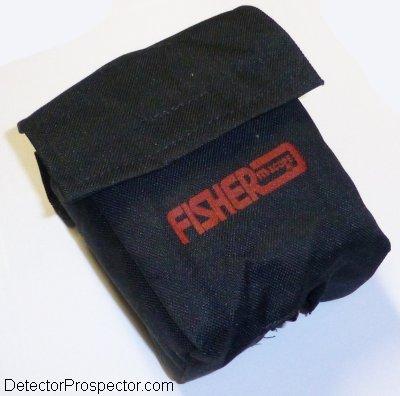
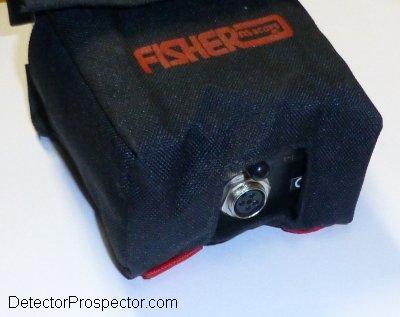
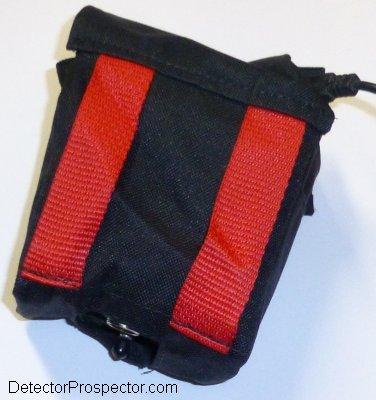
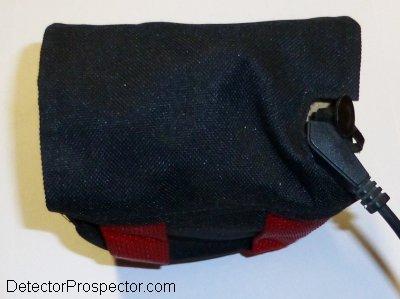
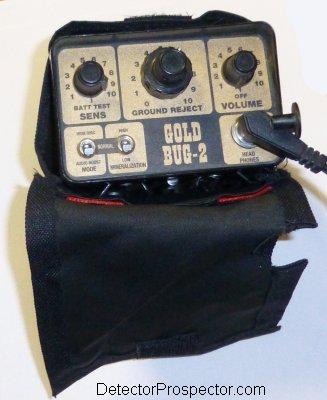
The cover is originally designed as a hip mount holster option, using the loops incorporated into the holster instead of those on the control box itself.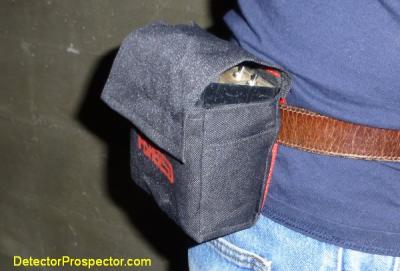
I wanted to use my control box cover, not for hip mounting, but while rod mounted. Here is a new cover next to my old cover with the slot I cut to allow the box to rod mount with the cover on. Just used scissors, never had an issue with tearing later.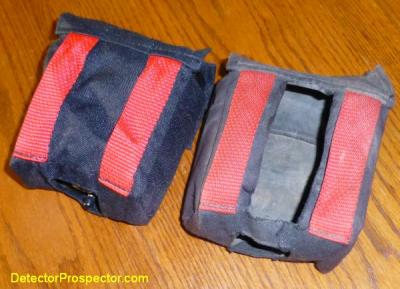
The final result - a fully protected Gold Bug 2 control box ready to lay in the dirt. The cover has a tiny pocket on each side but I have never used them. The top flips open easily for a quick control adjustment if needed or can be tucked in and left open if desired. This cover was made for years for the original Gold Bug and Gold Bug 2 and also fits the old 1225X and 1235X models. It was discontinued for several years and then made available again. Last MSRP I saw was $18.95 and part number 103696.
Most Fisher dealers probably do not even know this exists so you may have to look around to actually find one in stock someplace. One of those hand made things that probably will be discontinued sometime so I got the second one just to have two.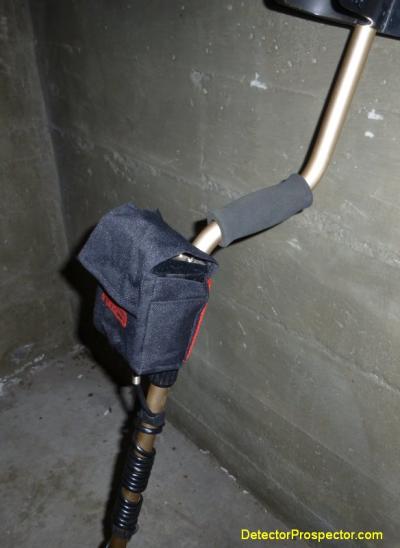
-
Close enough. When talking natural gold variation is the norm so readings are all over the map.
-
I do not think Keith Wills is a member here but I could be wrong. According to this post at Link deleted since Findmall update broke all old links by Monte there are two trimmer pots that exist and need adjusting. Many old Tesoro designs had the discrimination tied to the ground balance setting, so maybe the second trimmer adjusts the disc after the GB is set? Just speculating.
Could just email or call Keith via his website link I provided above. If you find out anything please let us know.
The designer, Dave Johnson, posts on TreasureNet as woof! with the exclamation mark. You could PM him also. Long shot but you never know. Or he may see your post there and respond.
-
Never heard of anyone doing it. I am fairly sure all metal is auto ground tracking only. However, the disc mode has a factory preset ground balance and I would think there is a internal potentiometer to set it. Keith Wills would probably know. http://www.brokendetector.com
-
Thank you for that JP!
The earlier the model the easier the decision gets. I upgraded at every new model, and for me the big difference was in going from SD to GP, and then from GP to GPX. But some steps along the way were incremental and harder to justify unless you are out prospecting a lot and finding substantial quantities of gold. If that is the case, any edge, no matter how small, is generally worth it.
-
I actually am not buying the heist story. The coins were stacked in sequential years. Coins stolen from the mint would probably be all one year. The coins sound to me more like a person who every year got one gold coin and put it away.
Not a bad saving system if you think about it; if I had done that my whole life I would have a nice little stash of my own!
-
I will ask JP to chime in but not much to recommend replacing a GPX 4500 with a 4800 in my opinion. There is the new Coin/Relic Timing and an improved Enhance Timing, plus improved electronics for increased target sensitivity and ground balance performance. The Coin/Relic is of no use to most people so it boils down to better? electronics.
The Sensitive Smooth mode exists in the 4500, was removed in the 4800, and put back in the 5000. Audio type Boost exists in the 4500, was removed in the 4800, and put back in the 5000. It appears to me part of Minelabs plan was to widen the gap between the 4800 and 5000 by removing some 4500 features from the 4800.
I can't honestly tell you I think selling a 4500 to get a 4800 would get you much other than a new warranty. -
Getting even better - the coins may have been buried by robbers! If so ownership and taxes gets even more interesting:
http://blog.sfgate.com/stienstra/2014/03/03/sf-heist-in-1900-may-explain-buried-gold-treasure/
http://pjmedia.com/tatler/2014/03/03/gold-treasure-trove-shocker/
-
If you have looked at my various articles you will see pictures of the tube above and below waterline and in between. The main issue I see is riffle clearing. In theory fully submerged is how these things are designed to run. But if underpowered back pressure can make for a system too slow to get proper riffle action. In those cases I found raising the tube and allowing air to enter the tube would dramatically increase the velocity over the riffles.
In other words, there is no right or wrong. You have to adjust the system to get optimum riffle action, and that can be a bit difficult when you can't see inside. I often reached up from the rear into the tube and felt the riffles to make sure they were not packed. Sometimes a hump of material was discovered midway up the tube covering half the riffles! Not good.
Forward and back tilt also matters though less than you would think because you are dealing with an enclosed forced system. If the unit has enough power the rear can be higher than the front and you still do ok as long as the velocity over the riffles is sufficient. I do not recommend it however. Placing rocks on the rear floats to get a bit more tilt was something I did often though, and sometimes up front to slow things up a bit. My tube was bolted in a fixed position so that was my method. It is possible to mount the tube such that the angle can be adjusted however so consider that option. I opted for simplicity.
Build it, use it, watch the riffle system carefully, and then adjust as needed. Never hog when in the gold! No matter what you can bury those riffles through inattention and that will pump gold out the back. More gold than is already headed that way in any case.
Lots of articles on subsurface dredges at Steve's Mining Journal plus the one I wrote for the ICMJ Prospecting & Mining Journal at http://www.icmj.com/article-notloggedin.php?id=2741
-
The MInelab GPX 4800 was released at the same time as the GPX 5000. The Minelab 4800 was intended as the next release after the GPX 4500, but before it was released Minelab came up with a couple new refinements different enough to warrant yet another model, the GPX 5000. The 4800 therefore became a sort of "non-model" as most dealers and users focused on the GPX 5000 as the new top-of-the line detector. Most dealers do not stock the GPX 4800 and it may as well not exist for all the attention it gets.
The fact though is that a GPX 4800 is basically a GPX 5000 less a couple timings. Details can be found in the GPX 4800 / GPX 5000 Brochure (excerpt of spec sheet at end of this post) but what it boils down to is the GPX 4800 lacks the Fine Gold and Salt Gold timings.
Salt Gold is an improvement of the Salt Timing found on previous models that works better on salt flats and salt water beaches. Fine Gold is a bit misunderstood. Sensitive Extra is the best setting for pulling small gold out of most ground in the US. Fine Gold is intended for extremely mineralized ground. There are a lot of people who have decided Fine Gold is the magic setting but it really should not be used in milder ground where more powerful timings will do the job better.
It really all boils down to the Fine Gold timing, and most people just went ahead and ponied up for the GPX 5000 for the extra $800.
Steve's Guide to Differences Between the Minelab SD, GP, & GPX Detectors


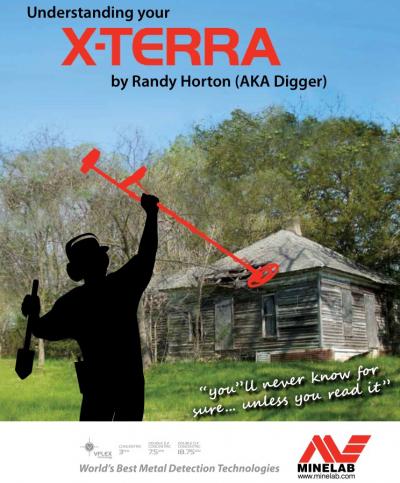
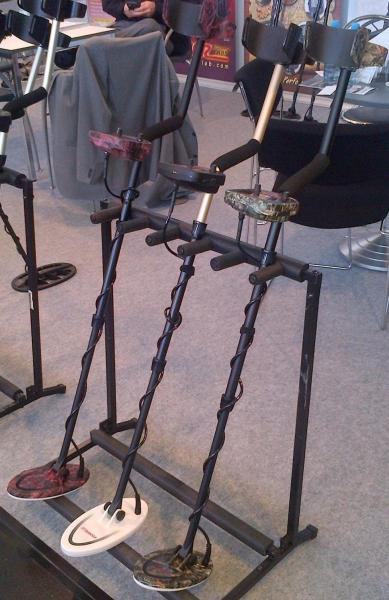
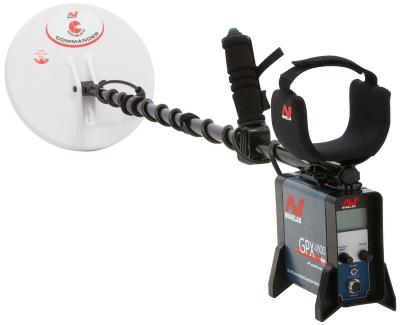
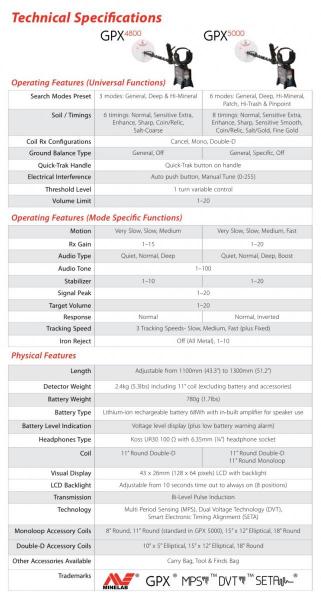
Garrett Atx Vs Minelab GPX 5000
in Metal Detector Advice & Comparisons
Posted
Love to see it and I will be there for sure so finally get to meet you. Looking forward to it, been too busy to chase you down.